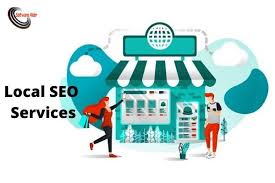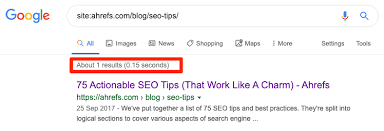Unlocking the Potential of Local SEO with Google My Business
The Power of Local SEO with Google My Business
In today’s digital age, local search engine optimisation (SEO) has become an essential strategy for businesses looking to attract customers in their area. One powerful tool that can significantly boost your local SEO efforts is Google My Business.
What is Google My Business?
Google My Business is a free tool provided by Google that allows businesses to manage their online presence across the search engine and its various platforms, including Google Search and Google Maps. By creating and optimising your Google My Business listing, you can increase your visibility in local search results and make it easier for potential customers to find and contact you.
The Benefits of Using Google My Business for Local SEO
There are several key benefits to utilising Google My Business as part of your local SEO strategy:
- Improved Visibility: A well-optimised Google My Business listing can help your business appear in the local pack and map results, increasing your visibility to users searching for products or services in your area.
- Enhanced Credibility: Having a verified and up-to-date listing on Google My Business adds credibility to your business and reassures potential customers that you are a legitimate and trustworthy entity.
- Increased Engagement: You can engage with customers by responding to reviews, posting updates, sharing photos, and providing important business information such as hours of operation and contact details.
- Local Insights: Gain valuable insights into how customers find and interact with your business online through the analytics provided by Google My Business.
Tips for Optimising Your Google My Business Listing
To make the most of Google My Business for local SEO, follow these tips:
- Create a Complete Profile: Provide accurate information about your business, including name, address, phone number (NAP), website URL, categories, and business hours.
- Add High-Quality Photos: Upload photos that showcase your products or services, premises, team members, and any other relevant visuals that can attract potential customers.
- Solicit Reviews: Encourage satisfied customers to leave positive reviews on your listing as they can improve your credibility and ranking in local search results.
- Use Keywords Strategically: Incorporate relevant keywords into your business description, posts, and updates to improve the chances of appearing in local searches related to your offerings.
In Conclusion
Incorporating Google My Business into your local SEO strategy is a smart move that can bring significant benefits to your business. By optimising your listing and actively engaging with customers through this platform, you can enhance your online visibility, attract more local traffic, and ultimately drive growth for your business.
Top 8 Advantages of Using Google My Business for Local SEO Success
- Increased visibility in local search results
- Enhanced credibility and trustworthiness
- Improved engagement with customers through reviews and updates
- Valuable insights into customer interactions and behaviours
- Free tool provided by Google for businesses
- Ability to showcase products, services, and premises through photos
- Opportunity to rank in the local pack and map results
- Effective way to provide essential business information like hours of operation and contact details
Challenges of Local SEO: Navigating User Content, Competition, and Google Dependency
- Limited Control Over User-Generated Content
- Competition for Visibility
- Algorithm Changes
- Potential for Spammy Listings
- Dependency on Google
- Difficulty in Managing Multiple Locations
Increased visibility in local search results
By utilising Google My Business as part of your local SEO strategy, you can experience a notable benefit of increased visibility in local search results. Optimising your Google My Business listing enhances the chances of your business appearing in the local pack and map results, making it easier for potential customers to discover your products or services when searching within your geographical area. This heightened visibility not only boosts brand awareness but also drives more targeted traffic to your business, ultimately leading to increased opportunities for engagement and conversions with local customers.
Enhanced credibility and trustworthiness
Having an optimised Google My Business listing not only improves your online visibility but also enhances your credibility and trustworthiness as a business. By maintaining an up-to-date and verified presence on Google My Business, you signal to potential customers that you are a legitimate and reliable entity. Positive reviews, accurate business information, and engaging content on your listing all contribute to building trust with consumers, making them more likely to choose your business over competitors.
Improved engagement with customers through reviews and updates
An important advantage of utilising Google My Business for local SEO is the enhanced engagement it offers with customers through reviews and updates. By actively encouraging customers to leave reviews and responding to them promptly, businesses can build trust and credibility within their local community. Additionally, regularly updating the listing with relevant information, promotions, and news keeps customers informed and engaged, fostering a stronger connection that can lead to increased loyalty and repeat business.
Valuable insights into customer interactions and behaviours
One significant advantage of utilising Google My Business for local SEO is the access it provides to valuable insights into customer interactions and behaviours. By leveraging the analytics tools offered by Google My Business, businesses can gain a deeper understanding of how customers discover their listing, what actions they take once they find it, and how they engage with the business online. These insights enable businesses to make data-driven decisions, tailor their marketing strategies to better meet customer needs, and ultimately improve their overall online presence and customer satisfaction.
Free tool provided by Google for businesses
One significant advantage of utilising Google My Business for local SEO is that it is a free tool offered by Google specifically for businesses. This means that businesses of all sizes, from small local shops to larger enterprises, can take advantage of the platform without incurring any costs. By providing a range of features and functionalities at no charge, Google My Business enables businesses to enhance their online visibility, attract more local customers, and effectively manage their online presence without adding to their marketing budget.
Ability to showcase products, services, and premises through photos
One of the key advantages of utilising Google My Business for local SEO is the ability to showcase your products, services, and premises through high-quality photos. By uploading visually appealing images that highlight what your business has to offer, you can capture the attention of potential customers and provide them with a glimpse of what sets your business apart. These photos not only add credibility and authenticity to your listing but also help create a positive first impression, ultimately increasing the likelihood of attracting local customers to engage with your business.
Opportunity to rank in the local pack and map results
One significant advantage of utilising Google My Business for local SEO is the opportunity it provides to rank in the local pack and map results. By optimising your Google My Business listing with accurate and relevant information, you increase your chances of appearing prominently in the local pack, a section of search results that showcases businesses related to a user’s query on Google Maps. This visibility not only enhances your online presence but also boosts your credibility and attracts potential customers who are actively searching for products or services in your area.
Effective way to provide essential business information like hours of operation and contact details
An important advantage of utilising Google My Business for local SEO is its effectiveness in providing essential business information such as operating hours and contact details to potential customers. By ensuring that this key information is readily available and accurate on your Google My Business listing, you enhance the convenience for users seeking to engage with your business. This transparency not only builds trust with your audience but also streamlines the process for customers to reach out or visit your establishment, ultimately contributing to improved customer satisfaction and increased footfall.
Limited Control Over User-Generated Content
An inherent drawback of utilising Google My Business for local SEO is the limited control over user-generated content. Negative reviews or inaccurate information posted by users have the potential to significantly impact your business reputation. Despite efforts to maintain a positive online presence, the influence of user-generated content on potential customers cannot be underestimated, highlighting the importance of actively managing and responding to feedback to mitigate any adverse effects on your brand image.
Competition for Visibility
In the realm of local SEO using Google My Business, one notable drawback is the fierce competition for visibility. As numerous businesses strive to capture the attention of local consumers within search results, distinguishing oneself from the crowd can prove to be a daunting task. The challenge lies in devising strategies that not only boost visibility but also set your business apart in a saturated local market where every click and impression counts towards establishing a strong online presence.
Algorithm Changes
One significant drawback of utilising Google My Business for local SEO is the constant changes in Google’s algorithms. These algorithm updates can have a direct impact on how businesses are ranked in local search results. The unpredictability of these changes means that a business’s ranking position can fluctuate, requiring continuous monitoring and adjustments to maintain visibility. This volatility can make it challenging for businesses to establish a stable and consistent presence in local searches, leading to potential fluctuations in online visibility and customer engagement.
Potential for Spammy Listings
One significant drawback of utilising Google My Business for local SEO is the potential for spammy listings. Competitors or malicious entities may resort to creating fake listings that mimic your business, leading to confusion among potential customers and tarnishing your business’s credibility. These fraudulent activities not only mislead consumers but can also negatively impact your online reputation and trustworthiness. It is essential to remain vigilant and regularly monitor your Google My Business profile to identify and report any suspicious or false listings that could harm your business’s online presence.
Dependency on Google
An inherent drawback of relying solely on Google My Business for local SEO is the dependency on Google itself. Businesses that place all their emphasis on this platform are at risk of vulnerability to any sudden changes or issues that may arise within the Google My Business system. This over-reliance can leave businesses exposed to fluctuations in search algorithms, policy updates, or technical glitches, potentially impacting their online visibility and customer engagement strategies. It is advisable for businesses to diversify their SEO efforts across multiple platforms to mitigate the risk of being solely dependent on one entity like Google.
Difficulty in Managing Multiple Locations
Businesses with multiple branches may encounter difficulties in managing their local SEO efforts through Google My Business due to the challenge of maintaining consistent and accurate information across all listings. Ensuring that each location’s details are up-to-date, such as contact information, business hours, and services offered, can be a time-consuming task that requires meticulous attention to detail. Inconsistencies or inaccuracies in the information provided across different listings can not only confuse potential customers but also negatively impact the overall search visibility and credibility of the business. Finding effective strategies to streamline and centralise the management of multiple locations within Google My Business is crucial to overcoming this con and maximising the benefits of local SEO for each branch.







